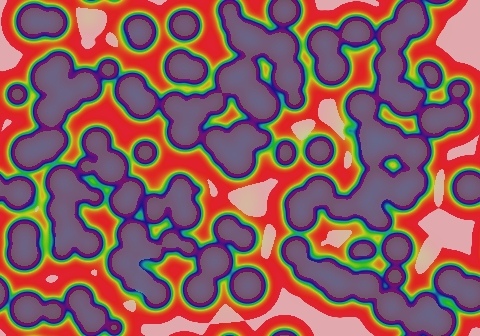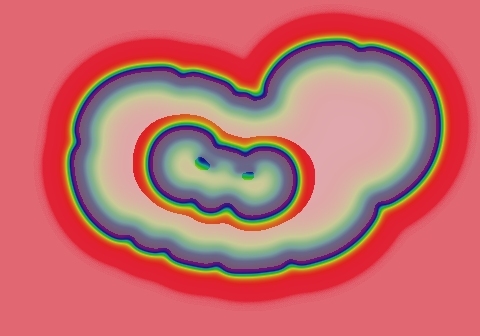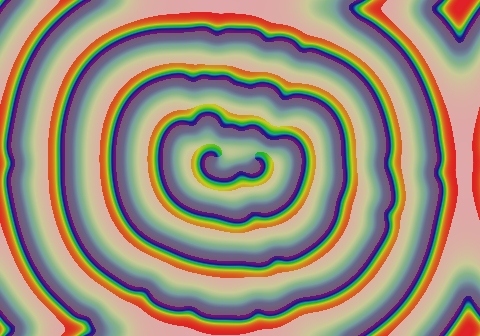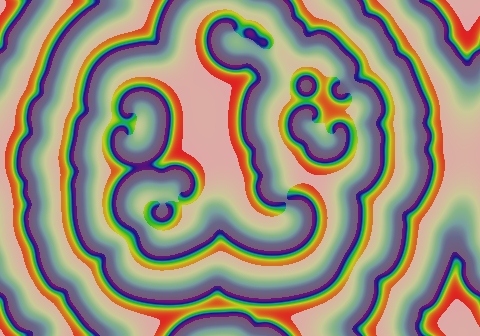Gray-Scott Model at F 0.0140, k 0.0450
These images and movie demonstrate the behavior of the Gray-Scott reaction-diffusion system with σ=Du/Dv=2 and parameters F=0.0140, k=0.0450.
Initial patterns of spots grow with smooth continuous wave fronts that completely annihilate each other. After this happened, I manually injected proto-spiral patterns (at 0:04 in the movie) to show that wavefronts with free ends result in a long-term sustained pattern. Gradually the wavefronts become more irregular, and by 12,500 tu (halfway through the movie) these irregularities are able to spawn new protospiral seeds. Double-spiral seeds also occur rarely; one is seen below-right of center near the end of the movie.
For 350,000 tu or more, the pattern continues as seen here, resembling the classic Petri dish B-Z (Belousov-Zhabotinsky) reaction photos.
Categories: Munafo ξ; Wolfram 3 (glossary of terms)
 increase F increase F
 | |||
 decrease k  |


|
15 frames/sec.; each fr. is 26 iter. steps = 13 tu; 1800 fr. total (23,400 tu) |  increase k 
|

|


| ||
 decrease F decrease F
 |
In these images:
- Color indicates level of u, ranging from purple (lowest u values) through blue, aqua, green, yellow and pink/red (highest u values)
- Areas where u is increasing are lightened to a light pastel tone; where u is decreasing the color is vivid.
- In areas where u is changing by less than ±3×10-6 per tu, an intermediate pastel color is seen. This includes areas that are in steady state or equilibrium.
''tu'' is the dimensionless unit of time, and ''lu'' the dimensionless unit of length, implicit in the equations that define the reaction-diffusion model. The grids for these simulations use Δx=1/143 lu and Δt=1/2 tu; the system is 3.2 lu wide. The simulation meets itself at the edges (periodic boundary condition); all images tile seamlessly if used as wallpaper.
Go back to Gray-Scott pattern index
This page was written in the "embarrassingly readable" markup language RHTF, and was last updated on 2019 Jan 05.
 s.11
s.11